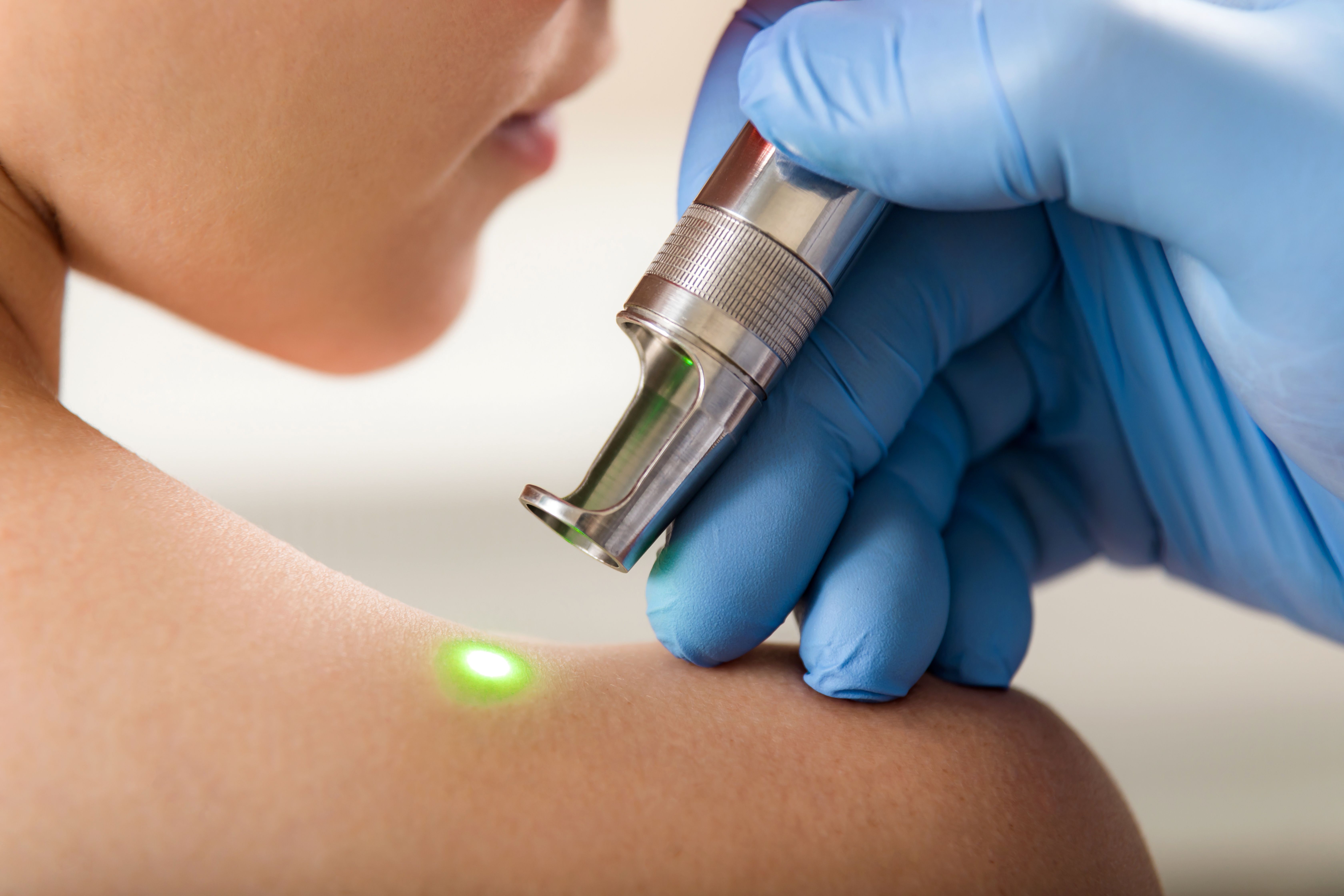- Acne
- Actinic Keratosis
- Aesthetics
- Alopecia
- Atopic Dermatitis
- Buy-and-Bill
- COVID-19
- Case-Based Roundtable
- Chronic Hand Eczema
- Drug Watch
- Eczema
- General Dermatology
- Hidradenitis Suppurativa
- Melasma
- NP and PA
- Pediatric Dermatology
- Pigmentary Disorders
- Practice Management
- Precision Medicine and Biologics
- Prurigo Nodularis
- Psoriasis
- Psoriatic Arthritis
- Rare Disease
- Rosacea
- Skin Cancer
- Vitiligo
- Wound Care
News
Article
Acupuncture Reduces Frown Lines in Clinical Trial
Author(s):
Key Takeaways
- Acupuncture shows significant improvement in glabellar line severity and quality of life, with minimal adverse effects, compared to controls.
- The study highlights acupuncture's potential as a low-risk, patient-tolerant alternative to invasive facial rejuvenation treatments.
Satisfaction levels remained high at 12 weeks post-treatment among those who received acupuncture.
Facial rejuvenation has grown in popularity as both an aesthetic and psychological intervention, driven by rising life expectancy and cultural emphasis on youthfulness. While conventional techniques such as cosmetic surgery and botulinum toxin (Botox) injections are common, interest in less invasive methods like acupuncture is increasing due to the latter’s lower risk profile and holistic health benefits.1 Recent research evaluated a randomized, waitlist-controlled clinical trial investigating the efficacy of combined facial and body acupuncture on glabellar frown lines in women aged 30 to 59.2
Background
The societal focus on aesthetics and quality of life (QOL) has fueled demand for procedures targeting signs of facial aging, such as glabellar lines—vertical furrows between the eyebrows often resulting from chronic facial muscle tension.3 Traditional treatments include surgical lifts or Botox injections, which, while effective, carry risks such as asymmetry, facial stiffness, and prolonged recovery. Consequently, acupuncture—a central component of Traditional Chinese Medicine (TCM)—has gained attention for facial rejuvenation with minimal adverse effects. According to TCM, facial appearance reflects internal organ health, and acupuncture is believed to enhance skin quality and muscle tone by improving systemic function and circulation.4
Methods
This single-center, randomized controlled trial was conducted at Imam Reza Hospital in Mashhad, Iran. Seventy-two eligible women were randomly assigned to either an intervention group receiving acupuncture or a waitlist control group. The intervention group underwent 12 biweekly acupuncture sessions over 6 weeks, involving standardized body and facial points, along with intradermal needling directly into the glabellar lines.
Outcome measures included the Glabellar Line Scale (GLS) assessed via standardized photography, the Global Aesthetic Improvement Scale (GAIS), Subject Satisfaction Scale (SSS), and QOL assessment using the SF-36 questionnaire. These evaluations were performed at baseline, immediately post-treatment (week 7), and at follow-up (week 12). Assessors of primary outcomes were blinded to treatment allocation.
Results
The study found significant improvements in glabellar line severity at both rest and during maximum frowning in the acupuncture group compared to controls. At week 7, GAIS scores indicated notable improvement in 63.9% of participants at rest and 72.2% during frown. These results remained relatively stable at week 12. The control group exhibited no spontaneous improvement.
Participant satisfaction mirrored objective improvements, with approximately two-thirds of the intervention group reporting satisfaction with their results at both assessment points. QOL analysis revealed a statistically significant improvement in the intervention group at week 7, particularly in pain relief, physical role function, and social functioning subscales. Although some of these effects diminished by week 12, the social functioning benefit persisted.
Adverse effects were minimal. Minor bleeding occurred in less than 5% of sessions, and only 0.69% resulted in transient bruising. No infections, allergic reactions, or treatment discontinuations were reported.
Discussion
This study is one of the first randomized controlled trials evaluating acupuncture specifically for glabellar lines. While improvement in dynamic wrinkles (during facial expression) was more pronounced early on, researchers stated the progressive reduction of static wrinkles (at rest) suggests cumulative benefits potentially linked to dermal collagen remodeling.
The transient nature of some benefits, especially regarding muscle relaxation and QOL indicators such as pain, highlights the need for maintenance sessions or integration with other modalities. Nevertheless, acupuncture presents a low-risk, patient-tolerant alternative to more invasive treatments. Researchers noted unlike Botox, it avoids muscle paralysis and may enhance systemic wellness.
Conclusion
The study found acupuncture appears to be a safe and moderately effective treatment for reducing glabellar frown lines, improving both objective wrinkle severity and patient satisfaction, while offering modest improvements in quality of life. Though further studies with larger sample sizes and longer follow-up are necessary, this research supports acupuncture as a viable complementary option for facial rejuvenation, particularly in individuals seeking non-invasive alternatives to surgery or neurotoxins.
References
- Hînganu MV, Cucu RP, Hînganu D. Personalized research on the aging face-A narrative history. J Pers Med. 2024;14(4):343. Published 2024 Mar 26. doi:10.3390/jpm14040343
- Haghir H, Yazdanpanah MJ, Farahmand SK, Khadem-Rezaiyan M, Azizi H. Is acupuncture effective in diminishing frown lines? Evidence from a randomized controlled trial. J Cosmet Dermatol. 2025;24(4):e70144. doi:10.1111/jocd.70144
- Reilly MJ, Tomsic JA, Fernandez SJ, Davison SP. Effect of facial rejuvenation surgery on perceived attractiveness, femininity, and personality. JAMA Facial Plast Surg. 2015;17(3):202-207. doi:10.1001/jamafacial.2015.0158
- Barrett JB. Acupuncture and facial rejuvenation. Aesthet Surg J. 2005;25(4):419-424. doi:10.1016/j.asj.2005.05.001
Newsletter
Like what you’re reading? Subscribe to Dermatology Times for weekly updates on therapies, innovations, and real-world practice tips.















